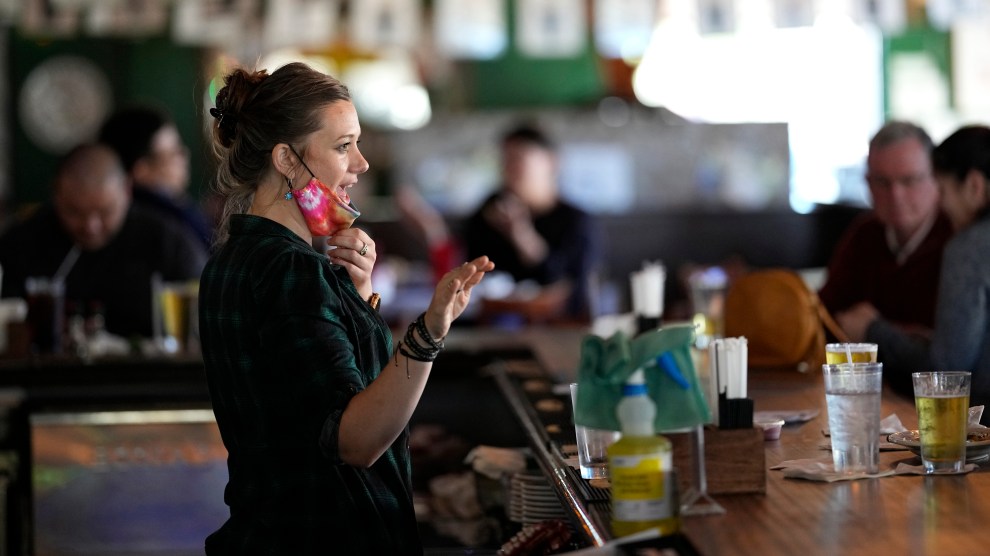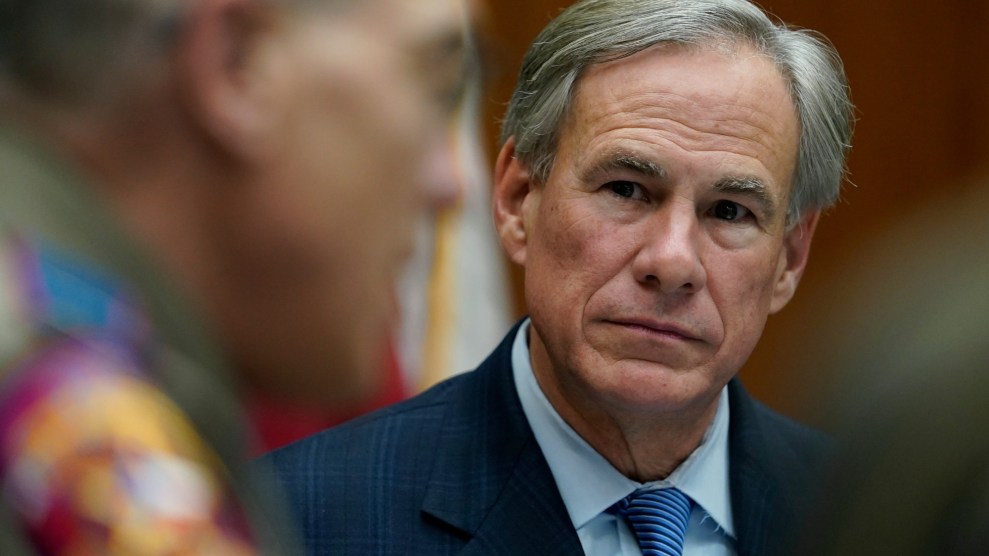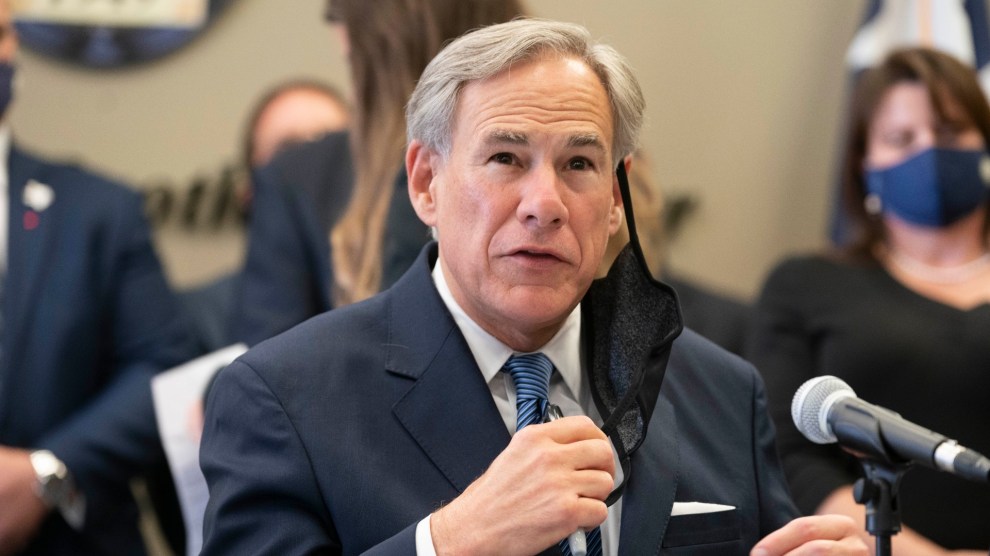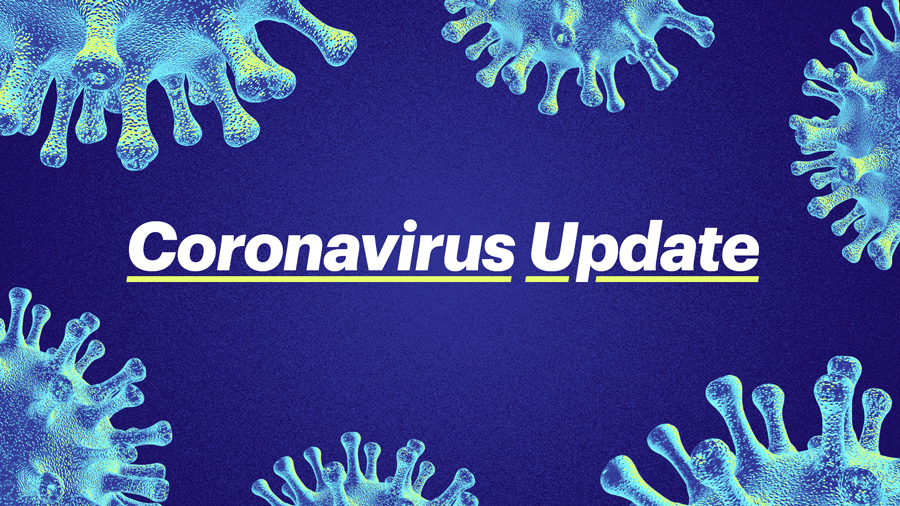
A Houston, Texas, Bartender talks with customers shortly after Governor Greg Abbott lifted the state's mask mandate. AP
Earlier this week, Texas and Mississippi became the first states in recent months to lift mask mandates, reopen indoor dining, and do away with a host of other statewide coronavirus restrictions. Connecticut also loosened some restrictions. “With this executive order, we are ensuring that all businesses and families in Texas have the freedom to determine their own destiny,” Texas Gov. Greg Abbott tweeted triumphantly. Some people cheered this move as a long overdue return to pre-pandemic life. After all, why not get back to normal since coronavirus cases and deaths are down since the winter surge, and, at the same time, we’re making great strides on getting highly effective vaccines into more American arms. Right?
Well, not exactly. All that progress is great news. But these actions have spurred public health experts to warn that returning to normal now is a very bad idea. Like, really bad. The governors are “potentially infecting other people in ways that could kill them,” said Sarah Cobey, a computational biologist who studies infectious disease at the University of Chicago. “I’m not a lawyer, but I think it’s a form of battery.”
There are many reasons that reopening now is dangerous. As my colleague Jackie Mogensen recently reported, lifting restrictions is exactly what the virus wants us to do—as we’re seeing the world over, more community spread creates the perfect conditions for the virus to accumulate mutations that can lead to more transmissible and potentially more lethal strains.
But there’s another reason that may be more scientifically complex yet is just as urgent. It has to do with that concept known as herd immunity, which happens when enough people in a population gain immunity—through prior infection or vaccination—so that the virus can no longer run rampant. In order for us to reach herd immunity, vaccines need to work in concert with social distancing strategies. Here’s one important reason why.
From the vaccine trials, we learned that Pfizer and Moderna both offered protection of greater than 90 percent against the virus, compared to placebo shots, while Johnson & Johnson offers protection of 66 percent. Those figures reflect what’s called relative risk—which is when you’re comparing an intervention to no intervention at all.
That’s different from absolute risk. In this case, absolute risk means how effective the shots would be in a world without any virus restrictions in place, a circumstance that would have been impossible when vaccines were being developed. The trials happened in the real world of 2020, where some level of social distancing requirements—mask mandates, for instance, or limits on gatherings, and restaurant restrictions—existed in some form or another almost everywhere. If, all of a sudden, we lift all those restrictions and repeated the trial, the relative efficacy of the shots—the figures above 90 percent for Pfizer and Moderna and 66 percent for Johnson and Johnson—would likely remain the same. But the absolute risk of becoming infected—for both the placebo and vaccine recipients—would almost certainly increase, meaning more cases for both groups.
Last week, Isreali infectious disease epidemiologist Eran Segal noted this problem in a tweet. “Remember that vaccine efficacy was measured under conditions of masks and social distancing,” he said. “Efficacy is the sum of biological protection of the vaccine and protection resulting from public behavior. If behavior changes, efficacy will likely decline, perhaps even significantly.”
Segal didn’t respond to my request for comment, but the experts I talked to agreed that lifting restrictions could influence even vaccinated people’s absolute risk of contracting COVID-19. Ashleigh Tuite, an infectious disease epidemiologist at the University of Toronto, said that she didn’t believe that lifting restrictions would change anything about the shot’s ability to prevent severe cases of COVID-19, but she was convinced that it would almost certainly increase the overall number of severe infections. “If you have more infections overall, you’re more likely to see people who are vaccinated having severe outcomes—not because the vaccine isn’t working, but because the vaccines are not perfect,” said Tuite.
Cobey added that she worries that people may assume they have near perfect protection from infection once they’re vaccinated. But in places with high levels of community spread, that may not necessarily hold up. “A couple months ago, I was thinking that once enough people got vaccinated that they could be socializing more with other people who are vaccinated,” she told me. But she said she was still concerned that “the absolute risk” would be high for everyone in a community where there is a high level of transmission.
Which brings me to the second reason that lifting restrictions now would be a bad idea. In order to determine the level of COVID-19 in a particular community, epidemiologists rely on seroprevalence surveys—a process involving the recruitment of volunteers in order to test their blood for COVID-19 antibodies. This kind of study, says Cobey, suffers from a well-known methodological flaw called enrollment or participation bias: The kind of people who volunteer to participate in a survey like this do not tend to behave in the same way that the general population does. In this case, seroprevalence survey volunteers are likely to be the kind of people who follow virus news closely, and therefore are making personal choices to protect themselves in ways that others in their community may not—like by voluntarily wearing masks and choosing not to dine indoors. “Any of the seroprevalence studies where they’re inviting people to enroll will disproportionately be enrolling people who are at lower risk of infection,” says Cobey.
In communities with restrictions in place, survey participants will likely behave more similarly to everyone else—because rules like mask mandates ensure that everyone is taking at least some precautions. But the differences between the survey participants and the general population are likely to be greater in communities where restrictions are lifted—we must assume that once these rules no longer exist, many people will no longer voluntarily take precautions on their own. So in Texas and Mississippi, with the virus restrictions no longer in place, seroprevalence surveys may suggest a low level of community spread—when actually it’s much higher because of the lack of restrictions.
The difference between relative and absolute risk and the problem of enrollment bias are not typically things that regular people think about—rather, they’re finer points of epidemiological methodology. That’s why leaders have public health experts on their staff—to make sure pandemic decisions are based on sound epidemiology. Individual citizens determining “their own destiny,” on the other hand, don’t have the benefit of a staff of public health experts to help make informed decisions about whether to wear a mask or eat at a restaurant. Which brings us back to why, says Cobey, the lifting of requirements in Texas and Mississippi is so foolish. “It’s completely ridiculous to reduce responsibility to the individual,” she says. “It’s deeply unfair.”













